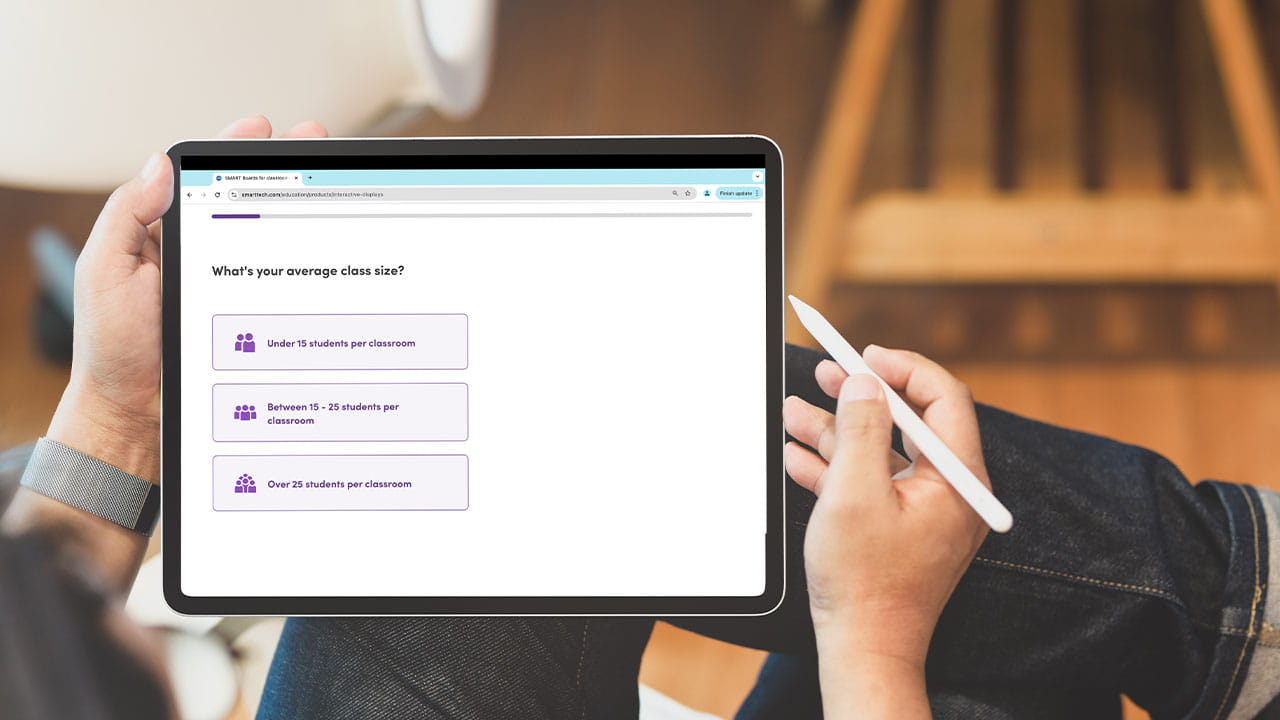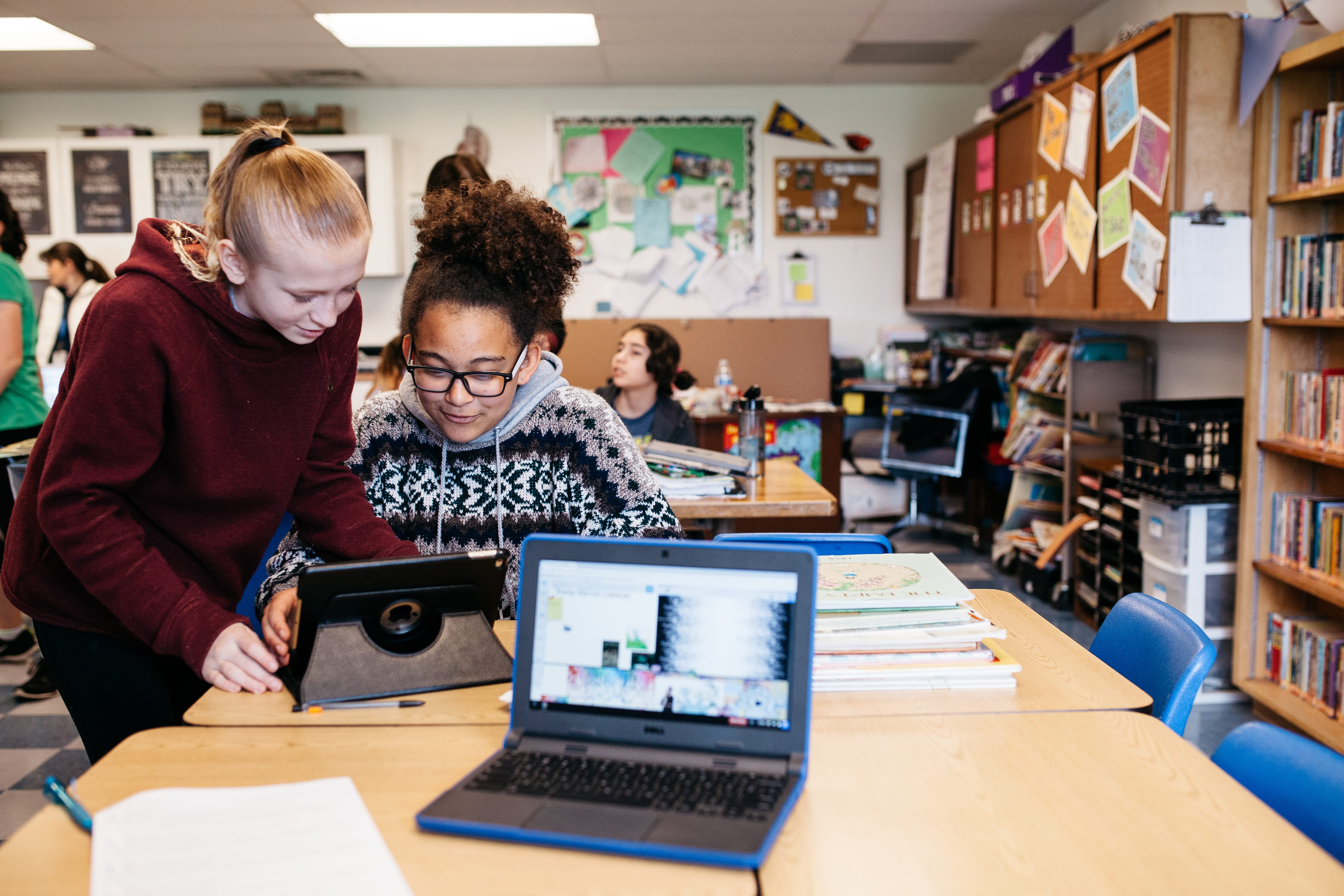Finding the most impactful methods for getting students excited about learning is a top priority for educators today. Educators are searching high and low for new ways to engage their students in the kind of learning that promotes understanding and retention while building key relationships and connections that matter most. In the United States alone, there are 60,500 monthly Google searches for “teaching strategies.”
As educators look for guidance on moving away from traditional, lecture-style lessons to hands-on and connected teaching methods where students learn through experiences, many have their eye on a particular set of strategies: active learning.
“Active learning gives students agency and control over what they are learning,” says Kris Astle, education strategist with SMART Technologies and lifelong educator. “This puts the learner at the center and allows them to make choices in moving their learning forward.”
Through active learning, students are encouraged to deeply explore what they already know, seek new connections with peers and experts, hear differing perspectives, and bring their whole identity into the classroom. Astle believes this is where learning gets fun and also becomes most effective.
“When our kindergartners come in, they want to touch everything. They want to take it apart and play with the learning. That’s how our brains are wired to learn,” she says. “When students get to break the learning down into pieces and connect it to the things they're already passionate about, learning is sticky.”
Embracing active learning in the classroom supports higher-level academic outcomes. In their analysis of the impact of active learning, researcher Scott Freeman of the University of Washington and colleagues found that “active learning leads to increases in examination performance that would raise average grades by a half a letter, and that failure rates under traditional lecturing increase by 55% over the rates observed under active learning.”
Active learning can be defined and accomplished in myriad ways, giving educators the flexibility to tailor lessons to their students’ needs and connect with everyone in a busy classroom. The abundance of options may be daunting at first, but active learning is attainable. Read on to learn how active learning can work in the classroom and to get ideas for approachable steps you can take today to incorporate these principles into your classroom.
What does active learning look like?
Astle admits that active learning often looks “messy.” Instead of rows of perfectly lined up desks, furniture may be moved into small group settings. Rather than a teacher lecturing to the class, students may be talking with classmates, giving presentations, huddling in small groups, or working independently on a project as the teacher floats around the room checking on progress.
Chaos is okay. It is part of the process,
Astle says. One size doesn't fit all. You need a clear learning target — like the specific question you’re asking students. But active learning means being open to different ways for students to represent their learning.
3 benefits of active learning
There are nearly as many active learning benefits as there are ways to deliver lessons that focus on the importance of learning through experience. Getting students to engage and think through their work encourages creativity and nurtures self-confidence in the subject matter.
In a classroom of 35 students, it’s unlikely everyone will be passionate about the same topic and their skill levels will likely vary. Using teaching strategies that put the learner at the center of the learning goal, based on their interests and abilities, encourages engagement and motivation along with improved learning outcomes.
Consider these three benefits of using active learning teaching strategies:
1. Increased engagement: Studies show that students thrive when given a voice in their education, such as choosing the subjects they will study and how they will learn. When given options that align with their choices, students are far more likely to be engaged in their learning and to excel in all courses.
Getting students to bring in their passions means teachers have engaged learners who are on task and are not causing problems,
Astle says. Behavior interruptions also decrease when students are deeply engaged in their learning.
2. Makes learning meaningful: The human brain remembers new information more clearly when it can make connections to interests or existing knowledge.
Breaking the learning into pieces and connecting it to the things students are passionate about is sticky learning. It’s like building with Legos — you have a framework to stick more information to and build a bigger or more complete object,
Astle says.
3. Teaches critical thinking: Active learning strategies teach students to ask questions, process information, share ideas, and build stronger arguments. Those are much-needed skills in a world of information overload and a growing need to scrutinize the legitimacy of the media one consumes. Shifting the learning focus from conveying the content and relying on the memorization of facts to exploring the underlying process of learning is a critical skill that will set students up for lifelong success.
EdTech tips to support active learning
Because active learning is fluid and individualized, finding ways to implement its methods in the classroom can be intimidating. EdTech can help by providing individualized access to resources and activities and facilitating opportunities for small group and whole class collaboration.
Students can also help to select different mediums and applications that fit their interests, exercising their voice and choice. And they can decide how to share their learning, such as adding multimedia elements to a digital workspace, making a FlipGrid video, or even creating a podcast.
With technology, you are opening the door and saying to students, ‘Here are tools that you can use to take you in the direction that you're passionate about as you work toward the end goal,’
Astle says. Technology takes the burden of designing and planning multiple pathways off the teacher’s plate.
Start small for big results with active learning
The key to active learning success is to take small, strategic steps forward. There are many opportunities to engage students with active learning, from holding a virtual site visit that helps students apply classroom learning to real-world applications to role-playing a scenario as a group. Astle recommends lowering the barrier to active learning by asking students to complete a reflective writing piece.
Whatever we can take as teachers and put in students’ hands is active learning,
Astle says. It can be daunting because active learning is a big encompassing bucket term that means many things. The success is in the tiny steps to put students in charge of their learning.
Ready to learn more about how to incorporate active learning strategies into your classroom? Visit our blog or check out Lumio’s library of activities and resources focused on active learning.



